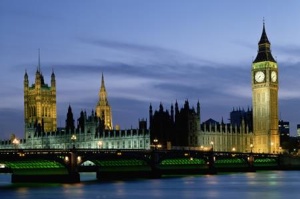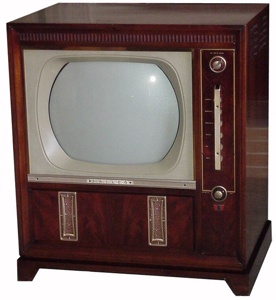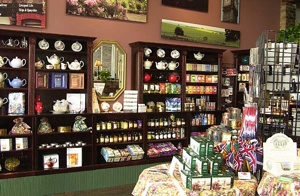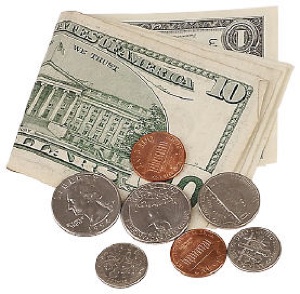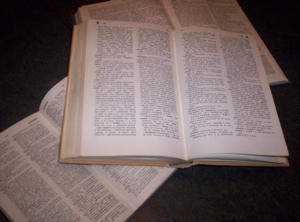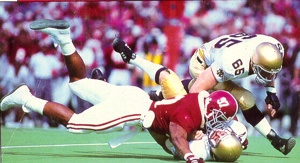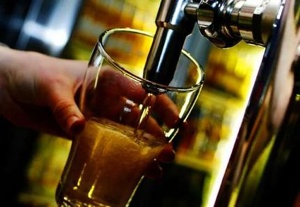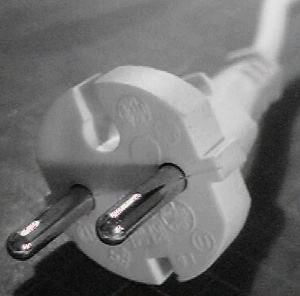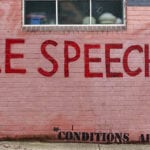 Creepy
Creepy  Creepy
Creepy  Movies and TV
Movies and TV 10 Movies That Get Elite Jobs Right, According to Experts
 Weird Stuff
Weird Stuff 10 Times Real Laws Were Based on Bizarre Hypotheticals
 Animals
Animals 10 Inspiring Tales of Horses Being Human
 Mysteries
Mysteries Top 10 Haunting Facts About the Ghost Ship MV Alta
 History
History 10 Surprising Stories About the Texas Rangers
 Humans
Humans 10 Philosophers Who Were Driven Mad by Their Own Theories
 Miscellaneous
Miscellaneous 10 Video-Game-Worthy Weapons and Armors from History
 Weird Stuff
Weird Stuff 10 Psychics Who Accurately Predicted Wartime Events
 The Arts
The Arts 10 Pieces of Art Inspired by a Broken Heart
 Creepy
Creepy 10 Death Superstitions That Will Give You the Creeps
 Movies and TV
Movies and TV 10 Movies That Get Elite Jobs Right, According to Experts
 Weird Stuff
Weird Stuff 10 Times Real Laws Were Based on Bizarre Hypotheticals
Who's Behind Listverse?

Jamie Frater
Head Editor
Jamie founded Listverse due to an insatiable desire to share fascinating, obscure, and bizarre facts. He has been a guest speaker on numerous national radio and television stations and is a five time published author.
More About Us Animals
Animals 10 Inspiring Tales of Horses Being Human
 Mysteries
Mysteries Top 10 Haunting Facts About the Ghost Ship MV Alta
 History
History 10 Surprising Stories About the Texas Rangers
 Humans
Humans 10 Philosophers Who Were Driven Mad by Their Own Theories
 Miscellaneous
Miscellaneous 10 Video-Game-Worthy Weapons and Armors from History
 Weird Stuff
Weird Stuff 10 Psychics Who Accurately Predicted Wartime Events
 The Arts
The Arts 10 Pieces of Art Inspired by a Broken Heart
Top 10 differences between Europe and America
Though only a stone’s-throw away across the grand Atlantic, Europeans and Americans are as different as night and day. And being anywhere from 5 to 7 hours difference in time, they literally are, too. Back in the days of old when that rag-tag batch of ticked-off Englishmen decided to brave the snarling sea and make new their lives in America, we’ve held similarities close to our hearts. However, times force great changes and leaps in advancement force gaps in our likenesses and make them far more diverse and different. Gone are the days when the ‘New’ Americans would take tea time, instead, we, as Americans, stumbled upon the idea of lunch… similar, but still, quite different. Well, you get the idea. Here are ten (of many, as we all know) ways we, as Americans, are different from our jovial brethren across the pond: the Europeans.
10. Government
Our Governments could not be any more unalike if we purposely attempted to create them so. And, as it turns out, we (the US) kind of did. Not happy with the persecution the European Government was dishing out to specific religious groups, the original Pilgrims who ended up on American shores would eventually go on to pass down ideas for a new government in their new land – despite the fact that they persecuted people in equally (if not worse) ways than the nations they left behind. Here are the governmental differences spelled out as clearly as possible:
Europe: The European Parliament (Europarl or EP) is the directly elected parliamentary body of the European Union (EU). Together with the Council of the European Union (the Council), it forms the bicameral legislative branch of the Union’s institutions and has been described as one of the most powerful legislatures in the world. The Parliament and Council form the highest legislative body within the Union. However their powers as such are limited to the competencies conferred upon the European Community by member states. Hence the institution has little control over policy areas held by the states and within the other two of the three pillars of the European Union. The Parliament is composed of 785 MEPs (Member of the European Parliament) who serve the second largest democratic electorate in the world (after India) and the largest trans-national democratic electorate in the world (492 million).
America: The federal government of the United States is the United States governmental body that carries out the roles assigned to the federation of individual states established by the Constitution. The federal government has three branches: the executive, legislative, and judicial. Through a system of separation of powers or “checks and balances,” each of these branches has some authority to act on its own, some authority to regulate the other two branches, and has some of its own authority, in turn, regulated by the other branches. In addition, the powers of the federal government as a whole are limited by the Constitution, which leaves a great deal of authority to the individual states. The federal government is based in the federal district of Washington, D.C. and is often referred to as “Washington”.
9. Television
While Americans enjoy a mind-numbingly huge array of television stations via satellite or cable, Europe (though able to acquire said choices) also has a slew of nationally funded channels that offer them different types of programming (and in the case of the BBC in Britain, free of advertising). Since about 2000, both continents offer roughly the same when it comes to cable, satellite, and the offers of broadband with phone service and TV. The BBC and ITV are due to launch Freesat, which, unlike Freesat from Sky, will be a free-to-air system similar to Freeview. Europe, of course, features comedies and dramas specifically catered to its core audience, such as Dr. Who and the original Office. We here in American television companies have been know to pilfer European (usually English) programming which then needs modification to make it more appealing to US viewers. In some cases these American spin offs have become more popular than the originals. Two in particular that spring to mind are The Office, and Three’s Company.
8. Meal Times and Etiquette
Europeans are more likely to be found eating as a family around the dinner table than many Americans who prefer the convenience of eating in front of the television. As a result, fast food chains are not as popular in placed like France and Italy as they are stateside. This, however, is not true of all nations in Europe, as the English (possibly through the influence of American television programming) are also beginning to lean toward the convenience of fast food (either ready made or ready-to-cook). Another striking difference is that in mainland Europe, supermarkets are far fewer in number than in America, as a large number of Europeans still buy their food daily from markets in their towns or city centers (again, this is probably no longer true of the United Kingdom). These markets are part of the appeal that Europe has for Americans traveling to Europe.
Trivia: In Europe, an entree is usually the first course of a meal (the same as an American appetizer). The main course is called “the main course”. American’s like to have a salad course, but this is almost never seen in Europe as salad (if it is being served) will usually be presented alongside the main course.
7. Shops
Shopping in the typical American city is a mater of walking around, going inside of whichever building one needs explore in order to locate goods and services, and purchasing. We have a plethora of the Big Box Stores like WAL-MART, Target, Meijer, and those similarly huge home-improvement shops like Lowe’s, Home Depot, and the like. We like what we need readily available at our finger tips and unfortunately this has contributed greatly to the end many of mom-and-pop stores. Grocery delivery is very common in England, while it is still only seen occasionally in the US. Europeans prefer the open-air shops with the amazing array of vastly different foods available in each specific location suited specifically to the item’s location. In Europe you will still see more high street shopping than malls, though this is beginning to change in some countries. The upside to this is that you get personal service, the downside is that if you get dreadful service, you have no one to complain to. It can take a lot more effort to find the items you need as you have to go to many shops instead of one.
6. Money
American currency is just about as basic as it comes: Bills for anything for a dollar and over (5,10,20,50 etc.), and coins for anything a quarter (25 cents) or less: dime (10), nickel (5), penny (1). For the most part and for the longest time our bills have been green with nothing more than age-old etched images of presidents and persons of historical significance, and some say hidden meanings dating back to the rise of the Free Masons and other government clubs. The member states of the European Union have adopted a universal currency called the Euro (with the exception of the British who are exempted from adopting the Euro). This can be incredibly convenient when on holiday, but the adoption of the Euro has caused some difficulties in nations where prices dramatically rose – such as Italy.
5. Language
America has one language for all – American English (though some might say that Spanish is creeping in) – Europe, on the other hand has more languages than nations. As a result, most Europeans will learn at least one other language in school (this is often compulsory in mainland Europe, but not the United Kingdom). English is spoken in most major cities and in the case of some people – like the Dutch, the English in Europe can be better than the English in England. Combined with the universal currency of Europe, this really does make holidaying easier.
4. Sports
To Americans, nothing kills a weekend more appropriately than sitting around with some good friends, nursing a few beers, and watching your favorite sports team beat the snot out of its opponent. We here in the U.S. have five major sports: Baseball, American Football, Basketball, Hockey, and Car Racing. Grabbing several bowls of artery-clogging goodies, staking out a spot in a favorite chair, and yelling at the television is what sports fans are all about. We love our sports so much we’ve delegated entire clothing lines to them. Now in Europe, the four main spectator sports are Football (soccer), Cricket, Rugby, and Tennis. And as we all know, your rabid attraction to your home teams rivals the beastly incorporation we have with our own. In fact, I have never seen anything even remotely close to the mass of infuriated spectators rising in unison to a bad call or a loss than European sports crowds. It’s just scary and has been known in the past to be deadly.
3. Cooking
American cooking, for all its variety and excitement, owes its very existence to everywhere else. Even our deep-seeded southern roots stemmed from French influence. If it can be successfully fried, we’ll happily do it. If it can be mass-produced and served with fried potatoes, we’ll joyfully do that, too. We love our steaks, our hamburgers, our hot dogs, our potato and tortilla chips, and our foods smothered in gravy. Europeans have a diverse cultural history in their food and this is still obvious in every nation. It would be wrong, however, to consider European food healthier overall – this is not necessarily the case and Europeans, knowing this, tend to eat smaller portions. Virtually every aspect of French cooking involves butter and cream. Of all the European nations, England is the one with the worst reputation for food – it is expensive and usually bad. This, however, is beginning to change as more English people take an interest in redefining old English favorites (such as steak-and-kidney pudding) for the new millennium.
2. Drinking
There is very little doubt that America’s favorite alcoholic beverage has got to be beer. We love to import, export, and support the local micro-brews of which there are literally thousands. In fact, I live smack in the middle of six, and the beers produced there are always readily available. We do have quite the active wine making community as well, generally on the west coast in California, though other states, such as Michigan where I live, produce wine as well. In my state, selling alcohol before 12 p.m. is not only taboo, but illegal. On Sundays you aren’t allowed to purchase after five p.m., and if it’s a holiday, none after 2 a.m the previous day or on the holiday at all. Now, in bars and pubs, you can purchase (as long as you are inside) until 2 a.m. Also, unless you want some serious trouble, you ought to be 21 to do so at all. Despite this high drinking-age, many kids start around 16 or 17. Europeans of course have beer, wine, and other alcohol, but most often just different variations on the common theme. In Europe the drinking age in each country varies too, but to be on the safe side, carry your ID if you drink or purchase alcoholic beverages. Some countries list two legal ages: one to buy beer and wine and another to buy stronger spirits such as vodka, while other countries allow younger people to drink while dining in the company of adults. It seems that the laws are similar as are the concerns for under-age drinking and especially drinking and driving. One major difference here, however, is that many European families give their children wine with dinner (often watered down) – there is much less a taboo associated with alcohol in Europe than America, which may be partly a side-effect of the prohibition movement.
1. Day to Day
While Americans and Europeans (excluding the British) drive on the same side of the road, there are still many different rules. The most obvious is the American rule allowing cars to turn on a red light. Most of the street signs use the same international symbols. In England, there are a variety of different crosswalks with different names: A puffin crossing has the lights on the same side as the pedestrian; a toucan crossing is a crossing for pedestrians and bicycles; a pegasus crossing allows horse-riders to cross as well. There are also tiger crossings (alternating yellow and black stripes) to allow cyclists to cross without dismounting, and of course, the zebra crossing. But wait – there’s more. There are also pelican crossings which are traffic light controlled.
Power sockets in the United Kingdom differ from the rest of Europe, and both are different from American (and Japanese) sockets. European plugs generally have two circular pins for inserting in to the socket (though there are variations in almost all of the nations in Europe), while British and Irish plugs have three thick rectangular pins. Also, European lights switch off in the opposite direction to American lights.
